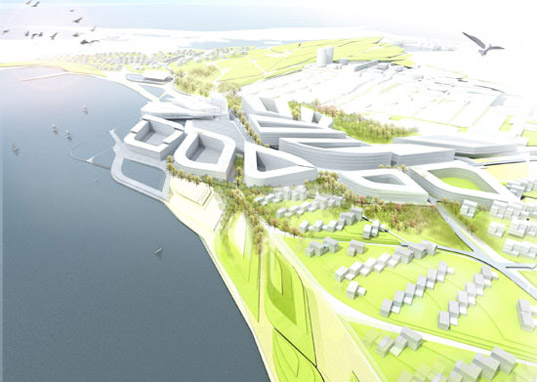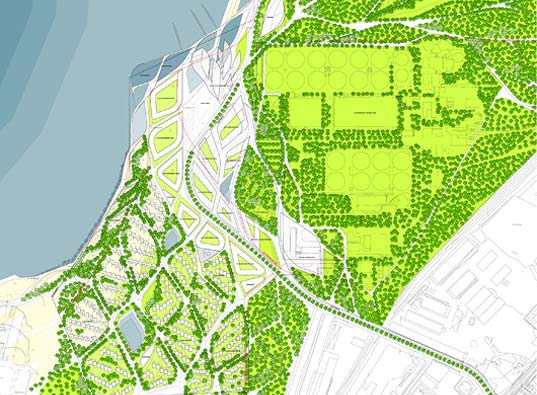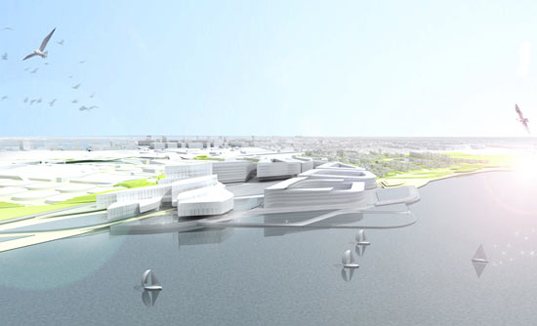丹麦Schmidt Hammer Lassen建筑事务所(简称SHL)赢得了位于爱沙尼亚首都塔林附近的新城镇“Ecobay”的设计招标。Ecobay新城坐落于斯堪地那维亚半岛之上,俯瞰着下面的波落地海。SHL事务所希望把这个新城镇变为一个拥有居民区、学校、商店、商业和日托中心等全套设施的充满活力的社区。Ecobay的设计是基于可持续发展的理念来的,到目前为止,该理念已经引发了大量的设计方案。比如,在该社区内安装各种不同功能的基础设施、交通成本的降低等等。风力发电厂、地热供暖与水力发电也将以不同的规模全面实施。该新型城镇的布局还将特别针对减弱强风与最大限度的利用太阳能而作出了特别的设计方案。在今后的15到20年内,将有6,000人在这里安家、生活和工作。

There’s something about the prospect of starting an entire city from scratch that’s sure to stir the imagination, evoking ideals of efficiency and future-forward design at it’s finest. Schmidt Hammer Lassen Architects were recently presented with just such an honor when they won first place in an international competition to create a new sustainable city set on the Paljassaare Peninsula in Estonia. Dubbed Ecobay, the mixed-use development will provide a self-sustaining community complete with housing, schools, commercial districts, and daycare centers. Situated serenely overlooking the Baltic Sea, the new city will benefit from a diverse portfolio of clean energy sources and will house up to 6,000 citizens as it is completed over the next 15-20 years.

Schmidt Hammer Lassen Architects‘ Ecobay is grounded in a sterling sustainable approach to city development. Its mixed-use layout seamlessly integrates a variety of different districts to minimize the need for transportation, since “most key destinations are just a walk or bike ride away”. Structures will be carefully laid out to maximize solar gain while minimizing overshadowing, and residences will be held to high standards of efficiency. The city’s energy needs are accounted for via a variety of clean sources including wind farms, geo-thermal energy, and hydro-electricity.

With sustainable super-cities sprouting up left and right, we’re reminded that starting from a clean slate presents a unique opportunity to design developments that are paradigms of efficiency. Still, such idealized modern developments are hardly new, and even since le Corbusier designs like as these have been the center of much controversy. While they certainly present an organized and efficient vision of modernity, some staunch critics (most notably Jane Jacobs) have raised concerns that they may limit the organic self-organizing capacity of a city left to grow of its own accord. Since these super-funded cities are currently in the process of creation, it has yet to be seen how their communities will grow and develop.





 cityup.org 传真电话:010-88585380
cityup.org 传真电话:010-88585380